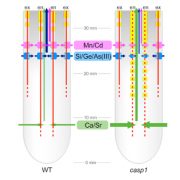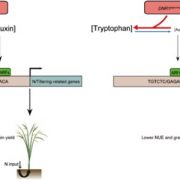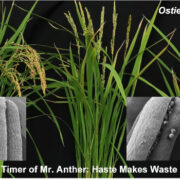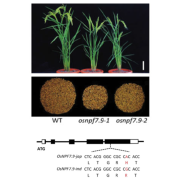The spikelet, a different “flower” in rice
Descriptive paragraph. Plant Cell https://doi.org/10.1105/tpc.18.00682
By Hui Zhuang and Yunfeng Li
Background: The spikelet, often mistaken for a “flower”, is actually an inflorescence unit and can produce one or more florets in some species of grass. This implies that it could be possible to increase the number of florets (grains) per spikelet and improve yield in species that currently produce only a one-floret spikelet. In rice, the spikelet contains one fertile terminal floret, one pair of sterile lemmas, and one pair of rudimentary glumes. Although wild-type rice produces just a single floret per spikelet, the loss of determinacy of spikelet meristems or restoring the two “lateral florets”, which now are considered to be antecedents of “sterile lemmas”, may enable an increase in the number of florets per spikelet. However, to achieve this, an enhanced understanding of the genetic and molecular mechanism of spikelet development is required.
Questions: Which is the key factor involved in spikelet development?
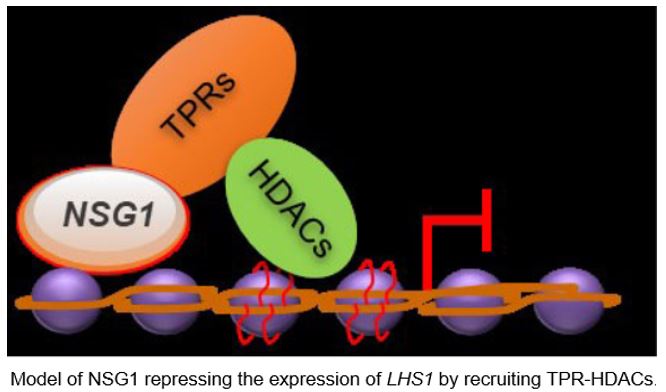 Findings: We identified a new transcription repressor named NSG1 which encodes a C2H2 zinc finger protein and plays a pivotal role in the regulation of lateral organ identities in the spikelet. In the nsg1-1 mutant spikelet, LHS1, DL and MFO1 were ectopically expressed in two or more organs, including the rudimentary glume, sterile lemma, palea, lodicule, and stamen, whereas G1 was down-regulated in the rudimentary glume and sterile lemma. Furthermore, the NSG1 protein was able to bind regulatory regions of LHS1, and then recruit the co-repressor TPRs to repress expression by down-regulating histone acetylation levels of chromatin. Our study demonstrates that most genes controlling spikelet development are regulated by upstream promoter regions and transcription factors.
Findings: We identified a new transcription repressor named NSG1 which encodes a C2H2 zinc finger protein and plays a pivotal role in the regulation of lateral organ identities in the spikelet. In the nsg1-1 mutant spikelet, LHS1, DL and MFO1 were ectopically expressed in two or more organs, including the rudimentary glume, sterile lemma, palea, lodicule, and stamen, whereas G1 was down-regulated in the rudimentary glume and sterile lemma. Furthermore, the NSG1 protein was able to bind regulatory regions of LHS1, and then recruit the co-repressor TPRs to repress expression by down-regulating histone acetylation levels of chromatin. Our study demonstrates that most genes controlling spikelet development are regulated by upstream promoter regions and transcription factors.
Next steps: We will do more in-depth analysis to identify spikelet development genes and their molecular regulatory network in rice. In addition, we will conduct molecular design breeding of “three-floret spikelets” using several spikelet development genes including NSG1 and LF1, which was identified by our group in 2017 and induced the formation of later florets in the place of sterile lemma (Zhang et al., 2017 PNAS).
Hui Zhuang, Hong-Lei Wang, Ting Zhang, Xiao-Qin Zeng, Huan Chen, Zhong-Wei Wang, Jun Zhang, Hao Zheng, Jun Tang, Ying-Hua Ling, Zheng-Lin Yang, Guang-Hua He and Yun-Feng Li. (2019). NONSTOP GLUMES 1 Encodes a C2H2 Zinc Finger Protein that Regulates Spikelet Development in Rice. Plant Cell. https://doi.org/10.1105/tpc.18.00682.
Key words: TFs, C2H2 zinc finger, spikelet development, rice




